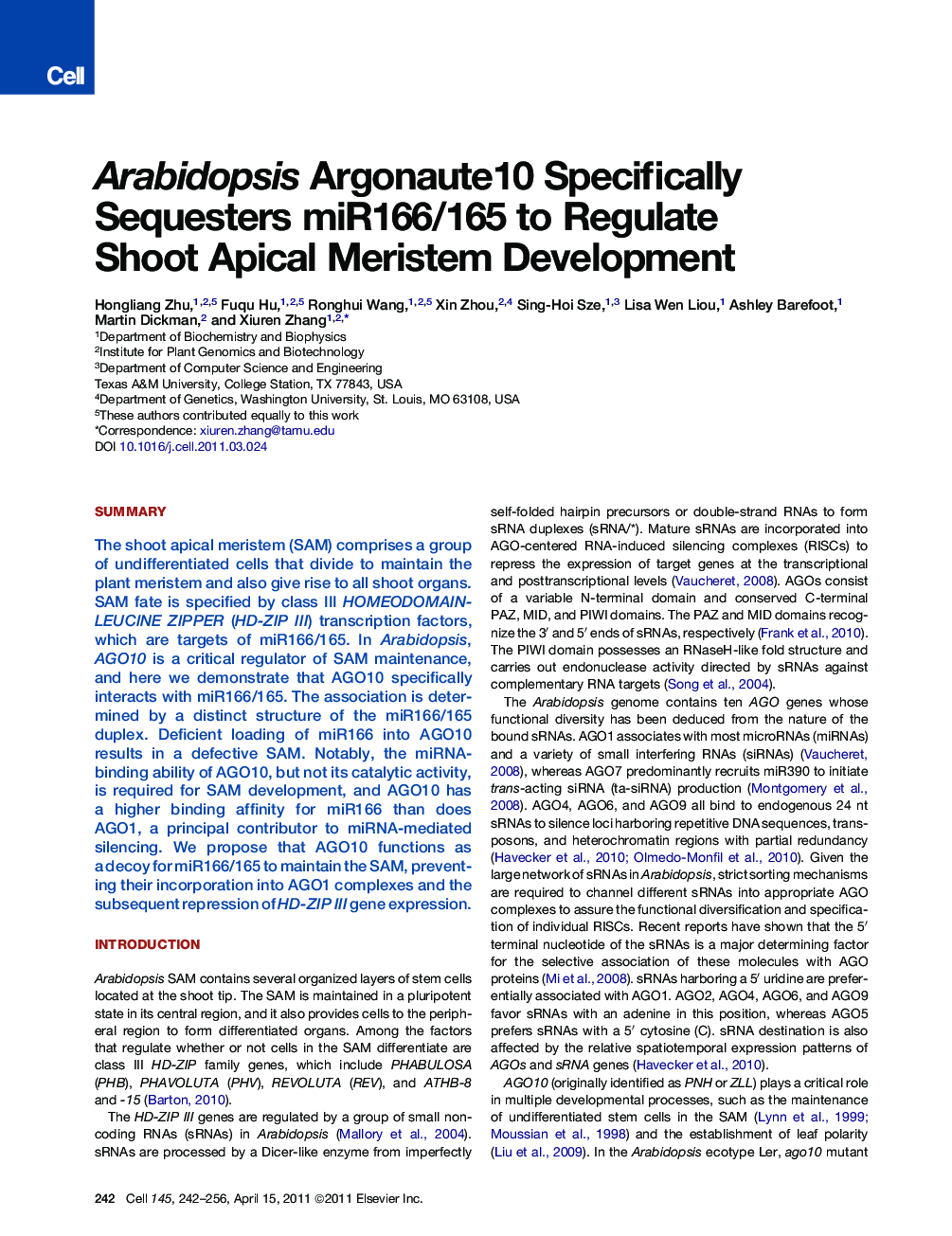| کد مقاله | کد نشریه | سال انتشار | مقاله انگلیسی | نسخه تمام متن |
|---|---|---|---|---|
| 2036460 | 1072266 | 2011 | 15 صفحه PDF | دانلود رایگان |

SummaryThe shoot apical meristem (SAM) comprises a group of undifferentiated cells that divide to maintain the plant meristem and also give rise to all shoot organs. SAM fate is specified by class III HOMEODOMAIN-LEUCINE ZIPPER (HD-ZIP III) transcription factors, which are targets of miR166/165. In Arabidopsis, AGO10 is a critical regulator of SAM maintenance, and here we demonstrate that AGO10 specifically interacts with miR166/165. The association is determined by a distinct structure of the miR166/165 duplex. Deficient loading of miR166 into AGO10 results in a defective SAM. Notably, the miRNA-binding ability of AGO10, but not its catalytic activity, is required for SAM development, and AGO10 has a higher binding affinity for miR166 than does AGO1, a principal contributor to miRNA-mediated silencing. We propose that AGO10 functions as a decoy for miR166/165 to maintain the SAM, preventing their incorporation into AGO1 complexes and the subsequent repression of HD-ZIP III gene expression.PaperFlick To view the video inline, enable JavaScript on your browser. However, you can download and view the video by clicking on the icon belowHelp with MP4 filesOptionsDownload video (9011 K)
Graphical AbstractFigure optionsDownload high-quality image (296 K)Download as PowerPoint slideHighlights
► Arabidopsis AGO10 predominantly associates with miR166/165
► The duplex structure of miR166/165 determines their specific association with AGO10
► AGO10 competes with AGO1 for miR166/165 binding
► The decoy activity of AGO10 drives shoot apical meristem development
Journal: - Volume 145, Issue 2, 15 April 2011, Pages 242–256